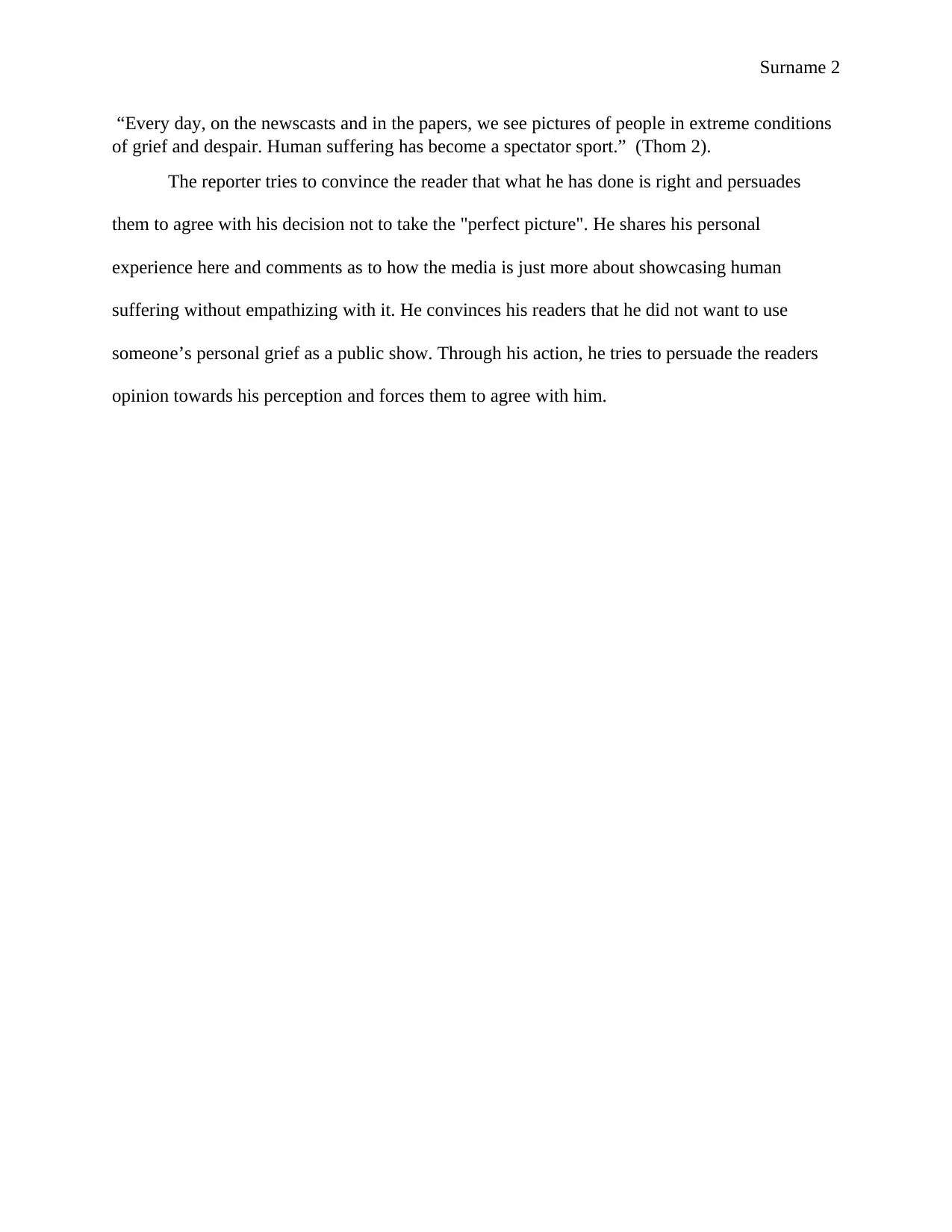Assignment: Analysis of Tone and Rhetoric in 'The Perfect Picture'
VerifiedAdded on 2023/05/29
|3
|522
|302
Homework Assignment
AI Summary
This assignment analyzes James A. Thom's short story, 'The Perfect Picture,' focusing on the narrative perspective of a young police reporter faced with a tragic scene. The analysis examines the reporter's internal conflict between his professional duty to capture a compelling photograph and his moral conscience, which prevents him from exploiting the grandfather's grief. The essay explores the story's themes of empathy, the ethics of journalism, and the impact of media on human suffering. The analysis highlights the use of first-person narration to create a strong rhetorical appeal and evoke emotions in the reader. It also discusses the reporter's commentary on the media's tendency to sensationalize human tragedy. The analysis demonstrates the reporter's persuasive attempts to justify his decision to not take the picture.
1 out of 3






![[object Object]](/_next/static/media/star-bottom.7253800d.svg)